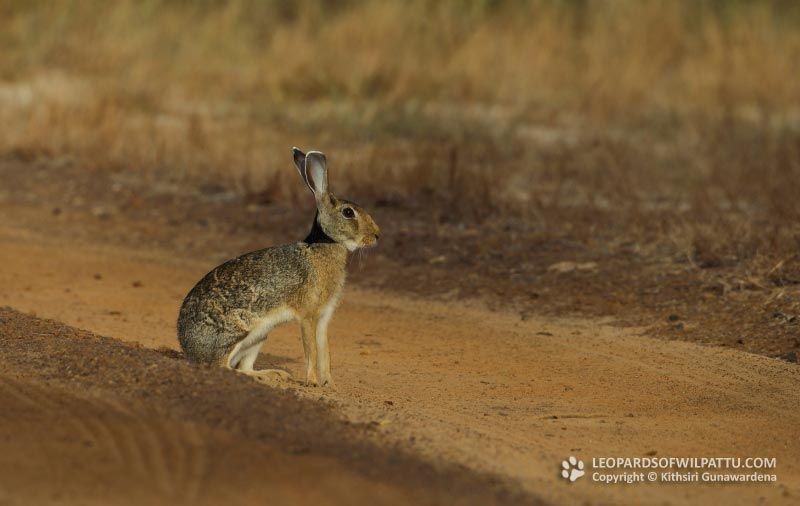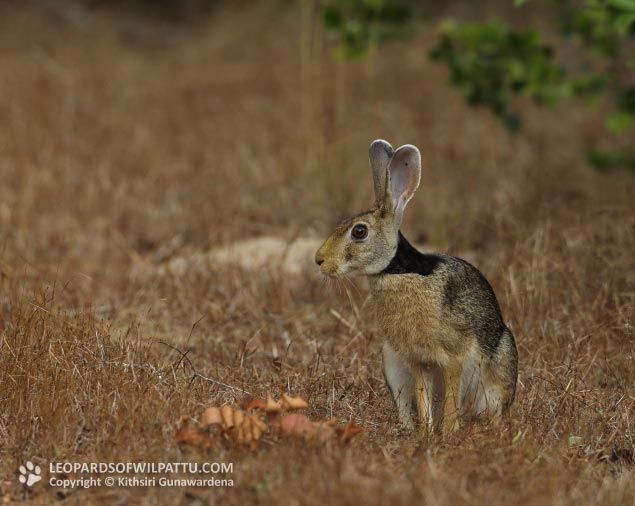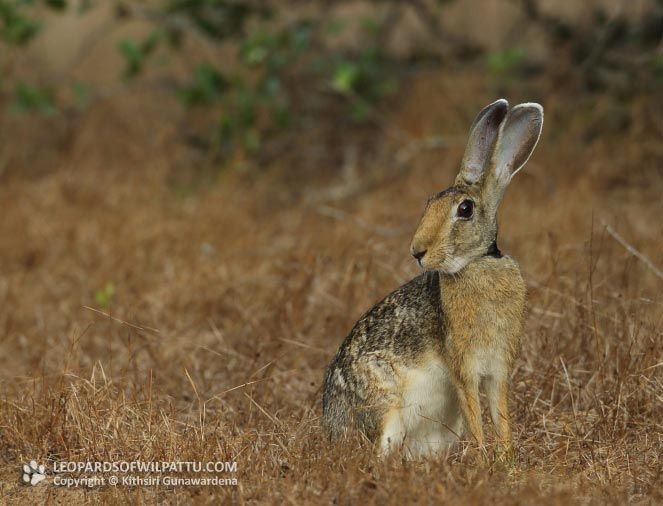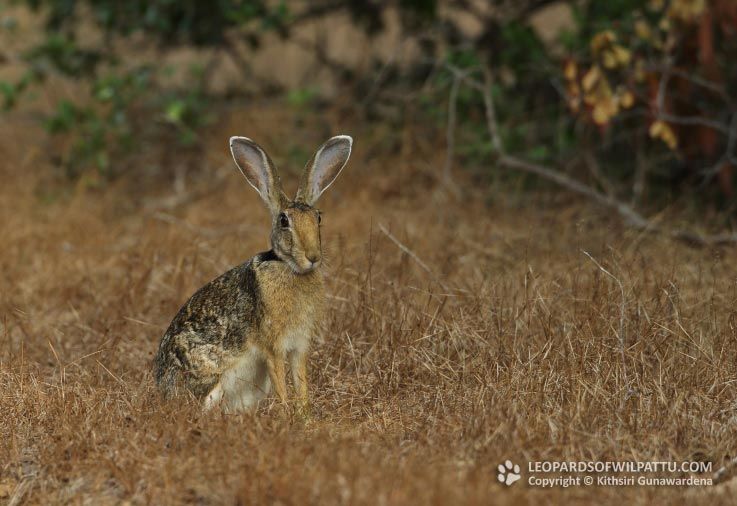
Mammals ‹‹ Go Back
Seven subspecies of this Hare, which is found in the Indian subcontinent and Java, have been recognized. It is found in India, Pakistan, Bangladesh, Nepal and Indonesia (Java – Origin Uncertain). Six of the seven subspecies, L. n. nigricollis, L. n. aryabertensis, L.n. dayanus, L. n. ruficaudatus, L.n. sadiya, L. n. simcoxi are found in different regions of the Indian subcontinent and Java whereas L.n. singhala (Hoffmann and Smith 2005)is only found in Sri Lanka. It has been introduced and is now found in Mauritius and Seychelles as well.
In Sri Lanka it is one of the commenest wild mammals and the conservation status of this species is regarded as Least Concerned (National Red list 2012).
I have observed this species throughout the country from the highest mountains to the arid areas close to the shore. About two decades ago I observed this species at the Colombo General Cemetery and the adjacent Golf Links. They are still found in areas just outside the city of Colombo wherever there is shrub jungle or agricultural plantains such as Coconut, Pepper, Coffee, Cinnamon and Rubber. In the hills I have observed them to be equally common in the cloud forests of Horton Plains National Park at an altitude of 2400 meters as well as in areas such as the Mannar Island and Arippu. They are very common in all the wet zone forests, dry zone national parks and low country and hill country Tea Estates.
The Black-naped Hare is a mammal that is often seen while driving in jungle areas or on estate roads at night. In the dry-zone they are grey in colour whereas those in the wet zone are more brown than grey. In the hills its overall colour is of a darker grey-brown.
They subsist purely on a vegetarian diet and are mostly nocturnal. Having hidden in their burrows or under some shelter during the day they will come out to feed at dusk and are often seen during dusk and dawn. However on overcast days they may feed out in the open for an hour or so after dawn. The hare has many predators. Other than the mammalian predators such as the Leopard and Jackal, I have seen Forest Eagle Owl and the Crested Hawk Eagle preying on this species.
In Wilpattu the Balck-naped Hare is often seen between 6 to 7am as you drive in to the park or in the evening when you leave the park around 6 pm, nibbling on the grass on the many glades.




